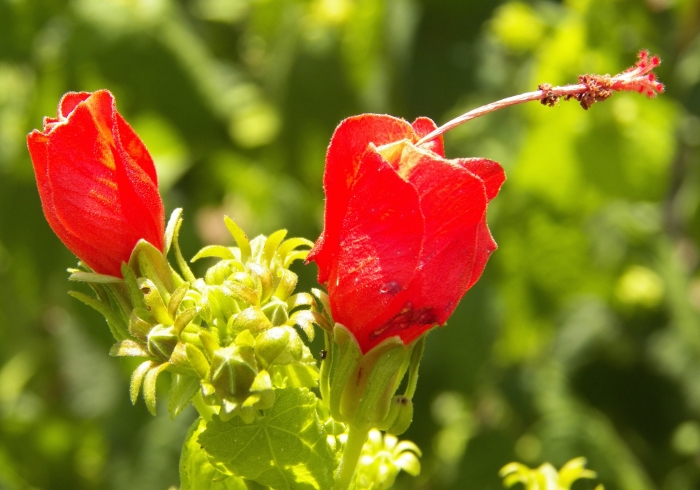Turkcap
(Malvaviscus arboreus)
Turkcap (Malvaviscus arboreus)
/
/

Diana Foreman
Public Domain



































































Estimated Native Range
Summary
Turkcap is valued for its long flowering season and the unique shape of its blooms, which add interest to shady garden areas. It is commonly used in butterfly and hummingbird gardens, as well as in borders and as an informal hedge. This plant thrives in partial to full shade, prefers moist but well-drained soils, and is relatively low maintenance. While it can tolerate short periods of drought, consistent moisture will promote the best flowering. It is also heat tolerant and can adapt to urban conditions. However, gardeners should be aware that Turkcap can spread aggressively by self-seeding and may become invasive outside its native range.CC BY-SA 4.0
Plant Description
- Plant Type: Shrub, Herb
- Height: 10-15 feet
- Width: 9-12 feet
- Growth Rate: Rapid
- Flower Color: Red
- Flowering Season: Spring, Summer
- Leaf Retention: Deciduous
Growth Requirements
- Sun: Full Sun, Part Shade
- Water: Medium
- Drainage: Medium
Common Uses
Bee Garden, Bird Garden, Butterfly Garden, Deer Resistant, Drought Tolerant, Edible*Disclaimer: Easyscape's listed plant edibility is for informational use. Always verify the safety and proper identification of any plant before consumption., Fire Resistant, Hummingbird Garden, Low Maintenance, Rabbit Resistant, Rock Garden, Salt Tolerant, Showy Flowers, Street Planting
Natural Habitat
Native to forest understories, thickets, and stream banks in the US Gulf States, Mexico, Central America, and South America
Other Names
Common Names: Turk’s-Cap , Turk’s Turban , Ladies Teardrop , Scotchman’s Purse , Manzanillo , Tripa De Buey , Tulipancillo , Monacillo , Obelisco De La Sierra , Flor De Santos
Scientific Names: Malvaviscus arboreus , Malvaviscus arboreus var. arboreus , Malvaviscus arboreus var. grisebachii , Malvaviscus polakowskyi , Hibiscus jerroldianus , Hibiscus jerroldii , Hibiscus nutans , Malvaviscus arboreus var. pilosus , Malvaviscus arboreus var. sagranus , Malvaviscus sagranus
GBIF Accepted Name: Malvaviscus arboreus Cav.